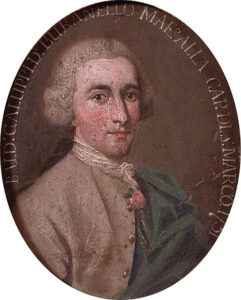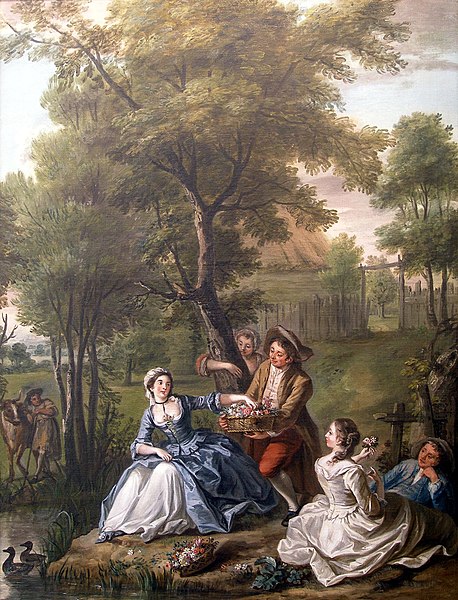Galuppi, Sonata in B-Flat
 Simpler melodies, lighter texture, moving easily from the expression of one emotion to another: these characteristics strongly contrasted with the aesthetics of the late Baroque, the contrapuntal complexity of J. S. Bach, Handel, and Telemann. The new style was called galant or, in Germany, empfinsdamer Stil (sensitive style). The sons of J. S. Bach embraced the new style and enjoyed success that overshadowed their father.
Simpler melodies, lighter texture, moving easily from the expression of one emotion to another: these characteristics strongly contrasted with the aesthetics of the late Baroque, the contrapuntal complexity of J. S. Bach, Handel, and Telemann. The new style was called galant or, in Germany, empfinsdamer Stil (sensitive style). The sons of J. S. Bach embraced the new style and enjoyed success that overshadowed their father.
The galant style was represented in art with scenes of people out in nature, elegantly dressed, enjoying relaxed social occasions, parties, fêtes.

In music, we think of Carl Phillip Emanuel Bach (1714-1788) and Johann Joachim Quantz (1697-1773) in the court of Frederick the Great at his pleasure palace Sanssouci in Potsdam. In Italy, the style was perfected in the chamber music of Giovanni Battista Sammartini (1700-1775) and the keyboard sonatas of Baldassare Galuppi (1704-1785).
Galuppi became one of the most prominent and successful composers in Italy, primarily for his opera seria. His reputation earned him an invitation to work in London at the King’s theater in Haymarket as composer of opera seria. Back home in Venice, he was named maestro di cappella at St. Mark’s, the highest musical post in Italy. He took three-years leave from that post to work in Russia for Catherine the Great where he melded Italian styles with Russian Orthodox liturgy. (Numerous Italian artists and architects left a lasting legacy in Russia.) Galuppi also gained fame in Russia as a keyboard performer.
He left some 90 keyboard sonatas, mostly written after 1755.



